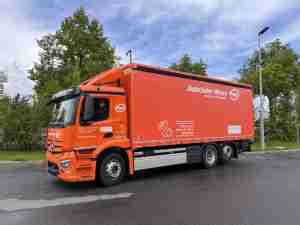FourKites Director of Project Management, Ryan Closser, recently sat down with FourKites VP of Industry Strategy, Todd Simms, to talk about how pervasive visibility into end-to-end supply chains can not only help manufacturers recover more quickly from disruptions, but can also catalyze better decision-making in virtually every aspect of operations.
Ryan: Today, we're going to talk about resilience and time to recovery in manufacturing supply chains. So Todd, we're seeing new headlines about fragility in supply chains every week.
Todd: Yeah, we now live in what I call “a collective disruption market.” We saw production hit really hard in Asia. Severe shortages within the semiconductor industry impacted multiple areas of technology and consumer products. We have additional COVID resurgences and the conflict in Ukraine. Then throw on top the labor shortage you have in manufacturing, with surging inflation and economic uncertainty. There are no more singular disruptions.
Ryan: So how do manufacturers really understand their risks and scenario plan so they can pivot and lower their time to recovery?
Todd: Time to recovery isn’t a new metric, but it’s gaining traction because the ability to measure the days it takes for operations to return to normal after a disruption is a big deal. I advise manufacturers to start by looking at the past five years. What was your time to recover from global disruptions? And then, you can begin to dig into how you could have narrowed that variation a little bit.
Ryan: Have you seen any recent success stories from manufacturers where they've been able to put these metrics and that view of time to recovery in place?
Todd: Absolutely. I can think of a few examples, one in the chemical industry and a pharmaceutical company. They prioritized having great transparency based on extensive data, and pervasive visibility, in their supply chain networks. And from an organizational perspective, they made sure everybody at every level has access to this data. That’s been the catalyst for better, faster decisions. And that has led directly to shrinking time to recovery.
Another big benefit — now, customers are seeing the value. Because with great transparency, you can be proactive in your customer communications. One example: If you're able to see a potential delay in advance because of a choke point in your supply chain, you can communicate that proactively to your customer. Now your customer has that same opportunity to pivot and be agile, so you have an opportunity to create a different level of customer loyalty.
Ryan: Great point. Ultimately, if people know something's going to be late, bad news doesn't age well, right? So let's surface it as soon as we see it and make things better for customers.
So let’s talk more about digitization. What capabilities are important to consider when you're looking at a provider to actually push that digitalization forward and have it be more than just a roadmap or words on paper?
Todd: Manufacturing supply chains need to be able to unify their operations across all modes, all regions, into one system. And I know I'm talking about the Holy Grail, but that's where people need to be going. That's how they need to think about their digital strategy.
Supply chains, especially in manufacturing, are incredibly complex. To say “a lot of moving pieces and parts” is a massive understatement. But keeping them connected allows you to know what’s really happening within your network versus just a fraction of that network.
Consider supplier rationalization. With deep visibility and data, you can answer critical questions. How many suppliers do I have today? How many make the most sense? Are they collaborative? Are they willing to share information and data? Being a “preferred supplier” is such a big deal for a lot of organizations because that helps them grow and be more agile.
Real-time visibility is table stakes at this point. You've got to have that visibility so you can turn your recovery from days to hours to minutes to seconds. It’s foundational to the ability to quickly assess a disruption. How does it impact your customers? What are the contingency plans, and how do you communicate that to them?
Ryan: I think a lot of supply chains are capturing a lot of data. One manufacturer recently told me that she thought her company was “data obese.” And then I talked to another one and they said they thought they were in a “data-rich” environment. That mindset around data is super interesting to me.
Todd: You have to see it as an opportunity. I think of three words when it comes to data: collect, curate and contextualize. How are you thinking about that data today and your ability to be predictive, to leverage AI and machine learning to make anticipatory, almost predictive actions, or to have collaborative conversations with your customers and your suppliers? Ultimately, it's going to help create better recovery plans that help you reduce your overall time to recovery.
Ryan: Data can be such a powerful tool or it can be an incredible nuisance if you're not actually doing anything with it. How do you ensure that the investment a company makes is worth it?
Todd: The biggest area I think is to look at how effective your change management processes are. You need to understand and over-communicate. If you have silos, you're not going to get everybody on board. Plan, source, make, service, deliver. If one of those functions is not on board, it's not going to work. You need everybody moving in the same direction.
Data and insights are a big piece of that, and we want to think about the ecosystem of a supply chain. Every piece of a supply chain has exceptional data. Can you harness it today? And can you make it available to everyone so they can make really strategic and actionable decisions that have a material impact to the bottom line?
Ryan: I think we've seen recently that companies realize that collaboration is a positive thing and it helps everybody. We've seen some positive momentum and a lot of value on both sides, both the companies who are sharing the data, as well as the companies who are receiving the data. After all, we need these goods in production and on store shelves. More companies are understanding that if everybody benefits, then let's share and collaborate, because that's for the greater good.









